Carp polyculture can be utilized using huge amount of organic wastes such as cowdung or poultry droppings and production levels of 1-3 ton/ha/year can be obtained with application of both organic and inorganic fertilizers alone. Provision of feed enhances the fish production significantly and production levels of 4-8 ton/ha/yr are obtained using a judicious combination of both the feed and fertilizers.
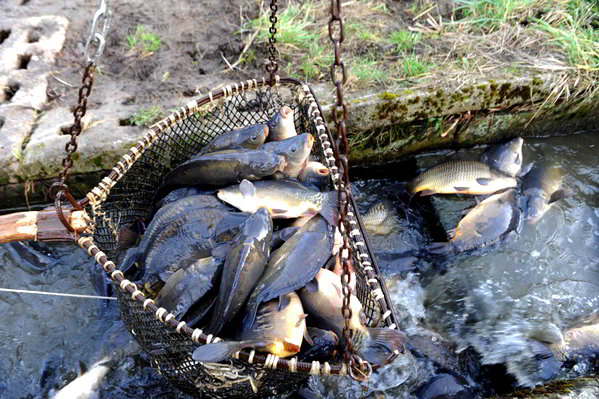
The packages of practices, as developed at the research institute have been adopted in ponds ranging from 0.04-10.0 ha in area and 1-4 m in depth in different regions of the country, resulting varying rates of production. While small and shallow stagnant ponds have several inherent problems, which adversely affect the growth of fish, the large and deep ponds have their own problems of management. Ponds of 0.4-1.0 ha in size with water depth of 2-3 m are considered to be best for better management.
The management practices in carp polyculture involve environmental and biological manipulations, which can be broadly classified as:
pre-stocking,
stocking and
post-stocking operations.
Pre-Stocking Pond Operations
Pond preparation involves making ponds weed and predator-free and generating adequate natural food to ensure high rates of survival and good growth and thereby yields. Control of aquatic weeds, removal of undesirable biota and improvement of soil and water quality are the important aspects connected with this phase of management. The detail regarding the control of predatory and weed fishes have been discussed in nursery management.
Stocking of Ponds
Ponds are stocked with seed of appropriate size after acclimatizing them to the new habitat when it is ready after fertilization. Both size and density of fish are important to achieve high yields. Fingerlings of over 100 mm in size are recommended for stocking in grow-out culture ponds. Stocking of smaller size of fishes may result in higher mortalities and slow growth during the initial months. In intensive polyculture ponds, a size of 50-100 g is preferred for stocking to realize higher survival of over 90% and better growth. Generally, a density of 5,000 fingerlings is kept as a standard stocking rate per ha for carp polyculture for a production target of 3-5 ton/ha/yr.
Stocking densities of 8,000-10,000 fingerlings/ha has been used for production levels of 5-8 ton/ha/yr. Higher targeted fish production levels of 10-15 t/ha/yr are achieved by resorting to stocking at a density of 15,000-25,000/ha. In carp polyculture, species ratio are maintained for minimizing the inter-specific and intra-specific competition for food available at various trophic levels and zones in a pond. Two or more species occupying different niches could be utilized in a pond for exploiting the food available at various zones. While a combination of common carp has been proved to be the ideal combination for carp culture, species combination largely are decided on seed availability and market demand.
Post-Stocking Pond Management
Fertilization. The ponds are classified into three groups based on the nutrient levels of the soil substratum. Fertilization measures for carp production ponds are recommended as follows. While 20-25% of the total amount of organic manures is applied as basal dose, a fortnight before the stocking, the remaining amount is applied in equal installments on a bimonthly basis. Other commonly used organic manures include poultry litter, pig dung, duck droppings, domestic sewage, etc. depending on the availability. Azolla, a nitrogen-fixing fern has been standardized as a bio-fertilizer for aquaculture at an application rate of 40 t/ha/yr, proving the full complement of nutrients required for intensive carp culture (100 kg nitrogen, 25 kg phosphorus, 90, kg potassium and 1,500 kg organic matter). The detritus resulting from the decomposition of the material applied in ponds serve as at a trophic component of the carps and the prawns. The bio-processed organic manure, biogas slurry, has been standardized as a manure in carp culture, at application rates of 30-45 t/ha/yr, with distinct advantages in terms lower oxygen consumption and faster nutrient liberation rates.
Supplementary Feeding. The supplementary feed in carp polyculture is usually restricted to mixture of groundnut/mustard oil cake and rice bran. With the shift towards intensive fish culture, other ingredients from plant and animal protein sources are being incorporated. To hold these components in the feed together, pelletization is done, which in turn helps for water stability and reduction of wastage. Grass carps are fed with preferred aquatic vegetation (Hydrilla, Najas, Ceratophylum, duck weeds, etc.) kept in enclosures in selected corners of the pond. Marginal vegetation, land grasses and other fodder, banana leaves and vegetable refuse can also be used.
In terms of feed dispensation, the feed mixtures are provided in the form of dough in trays or gunny bags hung at different places in the pond. Feeding preferably twice-a-day is advocated. Quantitative requirements of feed are important since underfeeding depresses growth while overfeeding results in wastage of food. Feeding is done at 5% of the initial biomass of stocking material for first month and further at sliding scale from 3-1% in subsequent months, based on the fish biomass estimated at monthly intervals.
Aeration and water exchange. Aeration may be used mechanically to increase the concentration of dissolved oxygen in ponds, especially required in intensive culture with higher stocking density. Paddle wheel aerators, aspirator aerators and submersible pond aerators are the common aerators used. 4-6 aerators/ha water area is required to meet the demand of dissolved oxygen in intensive aquaculture.
Pond Aeration. Water exchange is another important activity, considered to be crucial in intensive aquaculture. Due to continuous accumulation of metabolites and decayed unutilized feed, the water quality get deteriorated, leading to slow growth of fish species and often leading to outbreak of diseases. Thus, it is necessary to replace certain amount of water at regular intervals, especially during later part of the culture period in case of intensive culture practices.
Health Management. Prior to stocking, the fish seed should be given a bath of 3-5% potassium permanganate for 15 seconds. Incidence of disease is quite common in high stocking densities. Though mortality is rarely observed in well-managed ponds, fish growth is severely affected due to parasitic infection which need to be attended.
Harvesting. Harvesting of fishes is usually done after a culture period of 10 months to one year. However, fishes attaining the marketable size can be harvested periodically to reduce the pressure of density on the pond and thereby providing sufficient space for the growth of other fishes.
Source: bar.gov.ph
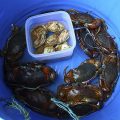
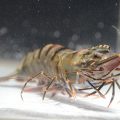
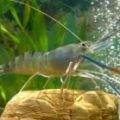
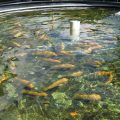
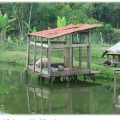


I’d love to be a part of group where I can get advice from other experienced people that share the same interest. If you have any recommendations, please let me know. Thank you.
Your very own commitment for getting the message throughout came to be rather powerful and have consistently enabled employees just like me to arrive at their desired goals.